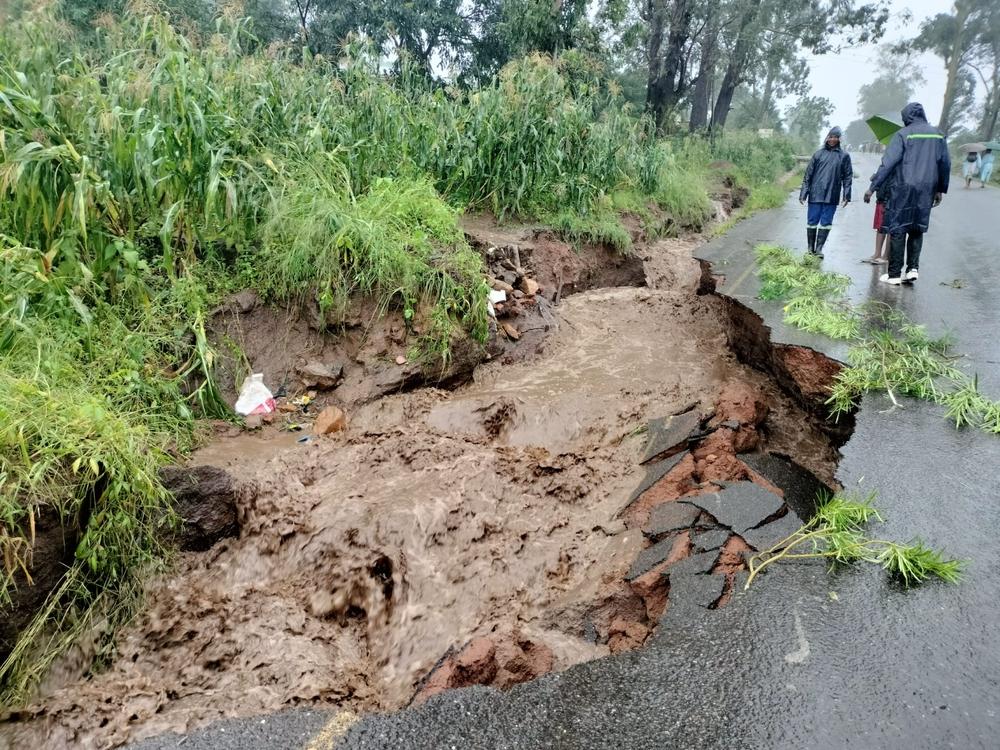A week after cyclone Freddy, the most intense cyclone ever recorded by weather stations, hit southern Malawi between March 12 and 14, some districts and their populations are still reeling from the destruction. The region’s roads, bridges and electrical and sanitary infrastructure have suffered heavy damages. Freddy is one of the deadliest events in Malawi's climate history to date.
“Entire villages have been engulfed by landslides and mudslides, flash floods caused by torrential rains have washed away houses, roads and bridges. Tens of thousands of people in some of the country’s southern districts now find themselves cut off from access to health facilities, which have either been destroyed or are no longer reachable due to the cyclone’s impact on road networks,” says MSF Emergency Coordinator in Malawi, Rasmane Kabore.
In the wake of the disaster, MSF has been responding to medical and humanitarian needs in and around Blantyre city, where we have been providing screening and treatment for cervical cancer since 2018.
“MSF teams supported Blantyre’s Queen Elizabeth Central Hospital (QECH) through the donation of medical supplies and the allocation of staff to treat the wounded and carry out orthopedic surgeries,” explains Guilherme Botelho, MSF Emergency Project Coordinator. “After visiting some of the camps in Blantyre district, located mostly in municipal buildings such as schools, we are providing clean water and chlorine, rehabilitating water networks, emptying latrines and distributing non-food items such as blankets, firewood and cooking equipment,” he adds.
Some 50 camps seem to have been set up around the city with the number of displaced people ranging from a dozen to over 2,500. We will continue to provide support and assess the medical and non-medical needs of the most populated camps.
After carrying out a series of assessment missions, MSF teams have begun responding in Phalombe, Mulanje, Chikwawa and Nsanje, some of the hardest-hit districts.
The southeastern districts of Phalombe and Mulanje are located at the bottom of the Mulanje mountain, which after an already prolific rainy season, was hit by Freddy’s heavy rainfall causing powerful mudslides and rockfalls. In Phalombe, our teams visited three health facilities including the public health centre of Nkhulambe, which is now filled with debris, mud and massive rocks, leaving roughly 54,000 people in the immediate vicinity with almost no access to health care.
“This area is completely cut off from the general population. We will plan the next steps so that we can respond to the needs of the population and help them to regain access to healthcare such as general outpatient services and referral of medical or surgical emergencies as soon as possible,” explains Robert Wellemu, MSF Medical Coordinator Support.
Malawi’s Ministry of Health, MSF and other humanitarian partners aim to rapidly restore access to essential health services in Nkhulambe by setting up an advanced health post. An MSF team is already on the way with medical and logistics staff along with medical supplies.
Further south, in a response coordinated by the Ministry of Health, MSF and humanitarian partners are trying to reach the priority zones of Ngabu, in the Chikwawa district, halfway between Blantyre and Nsanje as well as the towns of Makhanga, Osiyana and Sankhulani in the district of Nsanje, which all border on Mozambique. Access to these zones is extremely difficult due to damaged or flooded road networks leaving health centres poorly supplied and populations cut off from access to medical services. The aim is to reach all these areas before the end of the week to conduct a detailed assessment and respond to immediate medical needs. We are being particularly vigilant about a possible rise in the number of people affected by cholera in this zone.
The districts affected by cyclone Freddy are Balaka, Blantyre City, Blantyre District, Chikwawa, Chiradzulu, Machinga, Mangochi, Mulanje, Neno, Nsanje, Phalombe, Thyolo, Zomba City and Zomba District.
A report from Malawi’s Department of Disaster Management Affairs (DoDMA) on March 21 said casualties had risen to 507 deaths, 1,332 injured and 537 missing. The report added that the number of people displaced stood at 553,614 with 543 camps, mostly set in schools, to accommodate them.
